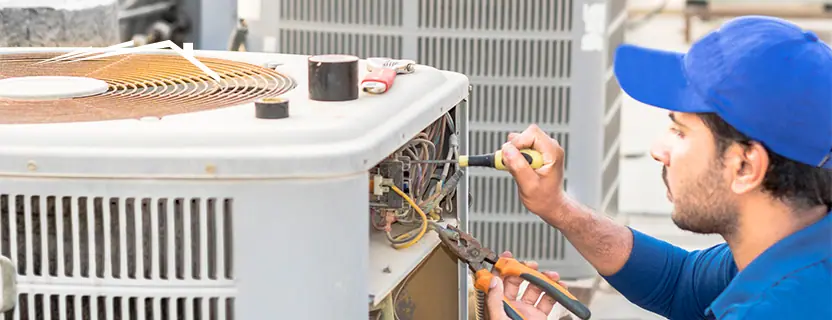Not known Facts About 1 Source Portable Air
Not known Facts About 1 Source Portable Air
Blog Article
The Only Guide for 1 Source Portable Air
Table of ContentsThe smart Trick of 1 Source Portable Air That Nobody is DiscussingIndicators on 1 Source Portable Air You Should KnowThe 1 Source Portable Air StatementsThe 1 Source Portable Air Ideas
Although references may appear challenging to track, there are ways to determine them rapidly and successfully. On social networks, lots of people hand out referrals concerning HVAC technicians that are reliable and professional during an a/c setup, repair work or maintenance job. Since various other individuals can make comments, the process of establishing whether or not a company is worth seeking is never ever a trouble.

An organization that has actually constructed a strong track record generally has highly seasoned service technicians who fully recognize exactly how to take on heating and cooling jobs that involve modern-day and classic equipment. Experienced specialists must always be thought about during innovative maintenance and repair work jobs due to the fact that the treatments that trained specialists carry out are cost-effective. An additional advantage is that skilled air conditioner business service providers never ever make use of improper replacement materials in order to streamline repair work tasks.
Yeah, at NEXGEN Air, we're professional A/c service technicians, but we understand that not every person is. This is for real who have actually never had to deal with a HVAC issue.
Not known Facts About 1 Source Portable Air
Heating and cooling represents heating, ventilation, and cooling. 9 fundamental components compose a total central air conditioning and warm system. These parts are the heater, the warm exchanger, the evaporator coil, the condensing device, cooling agent tubes, the thermostat, the ductwork, the vents, and the warm pump. (Do not fret! We'll describe these components carefully better down the listing.) The heating system is your heating system.
There are advantages and disadvantages to both, but we'll cover that in another section. You can discover your furnace hiding in your basement, garage, or energy closet. Your heating system's major feature is to heat air and relocate right into your ducts to heat your home. (Fun truth: Heaters are frequently misinterpreted for boilers, yet they're different appliances). Right here's an excellent example of a new Lennox furnace in an utility closet.

While the furnace presses warm air into your air ducts, the heat exchanger is the one converting cold air right into warm air. One more resident inside the furnace, the evaporator coil takes in any warm from air passing over it to blow cool air through your vents and right into your home. Your condensing device serves a comparable objective as your evaporator coil but you can find the condensing device outside, usually on the side of your house.
Refrigerant tubes attach your evaporator coil to your condensing coil. Cooling agent tubes are commonly made from steel and are developed to hold refrigerant and to link the interior and outside systems. Your thermostat is that little gadget placed on the wall somewhere inside your residence that enables you to control your home's temperature level (do not ask us where to discover your thermostat, there's no rule regarding where they're put - they could be anywhere!).
A Biased View of 1 Source Portable Air
Your home heating, air flow and cooling (COOLING AND HEATING) system is one of the most vital systems in your house, running silently in the history to take care of interior temperatures. Without heating and cooling, you would certainly be handling cold temperatures in the winter months and uncontrollable warmth in the summertime. Cooling and heating systems likewise aerate your home, keeping the air high quality healthy and balanced for your family members to breathe.
(http://localadvertised.com/directory/listingdisplay.aspx?lid=83423)

Maintain reading to find out more concerning picking the ideal HVAC system. There are several effective and budget friendly choices readily available for upgrading your heating and cooling. Nevertheless, choosing the very best HVAC system for your home relies on numerous individual elements and preferences. A couple of things to think about include the kind of system, energy performance and your budget.
Changing your system with a comparable setup is most likely the most cost-efficient option. Other considerations consist of the climate and weather condition where you live and what gas resources are offered.
Not known Facts About 1 Source Portable Air
The best kind of HVAC system depends on your needs. Some Heating and cooling systems integrate heating and cooling in one package, others operate with different types of devices.
Some systems warmth water, while others utilize residual warmth in the earth or air to run. The most effective system for you relies on your budget and the equipment readily available in your area. A/c systems are regulated by a thermostat, where you can set and keep track of temperatures. Temporary AC. If you invest in a wise thermostat, you can adjust your heating and cooling system over a phone application and incorporate it with various other clever innovation around your home.
For instance, you don't need a massive air conditioning system to cool a little house. To locate the very best option for you, figure out the square footage of your home and after that contrast that with dimension graphes for the HVAC tools. As an example, if you buy an a/c unit for a 900-square-foot home, basic guidelines recommend a system with around 18,000 British thermal devices (BTUs).
While setting up cooling and heating tools on your own may look like a method to conserve costs, any kind of issues might develop significant expenses in the future. Paying an expert for their time is well worth getting the task done. One more expense to take into consideration is upkeep. Think of how much time your new equipment will last and what you can do to expand its long life.
Report this page